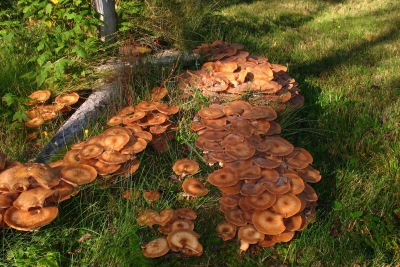
Is it the elephant? Is it blue whale? No, the largest living organism is the honey fungus! And, it also holds a world record for that. Come, let’s find out more.
In 1998, when more than 100 trees in Oregon, the U.S. died or were dying, it was discovered that the trees had been infected WITH Armillaria solidipes, a species of honey fungus. Constantly looking for trees or plants, they spread underground as a network of genetically identical tubular filaments. In effect, they fuse together to form one growing organism. However, this fusing and growing does not happen in a day; it takes years. The organism discovered in Oregon covered about 10 sq.km., and was “somewhere between 1,900 and 8,650 years old”. And, promptly found a place in the Guinness World Records as both the “largest living organism” and the “largest fungus”. The Oregon fungus beat a 6.5-sq.km. Washington fungus of the same species from 1992 for the title.
Just because an organism keeps fusing with another, can the result be called a single organism? Apparently, yes. According to a 2014 report, “The record –breaking A. solidipes clonal colony passes the test based on a definition of being made up of genetically identical cells that can communicate, and that have a common purpose or can at least coordinate themselves”.
Picture Credit : Google




